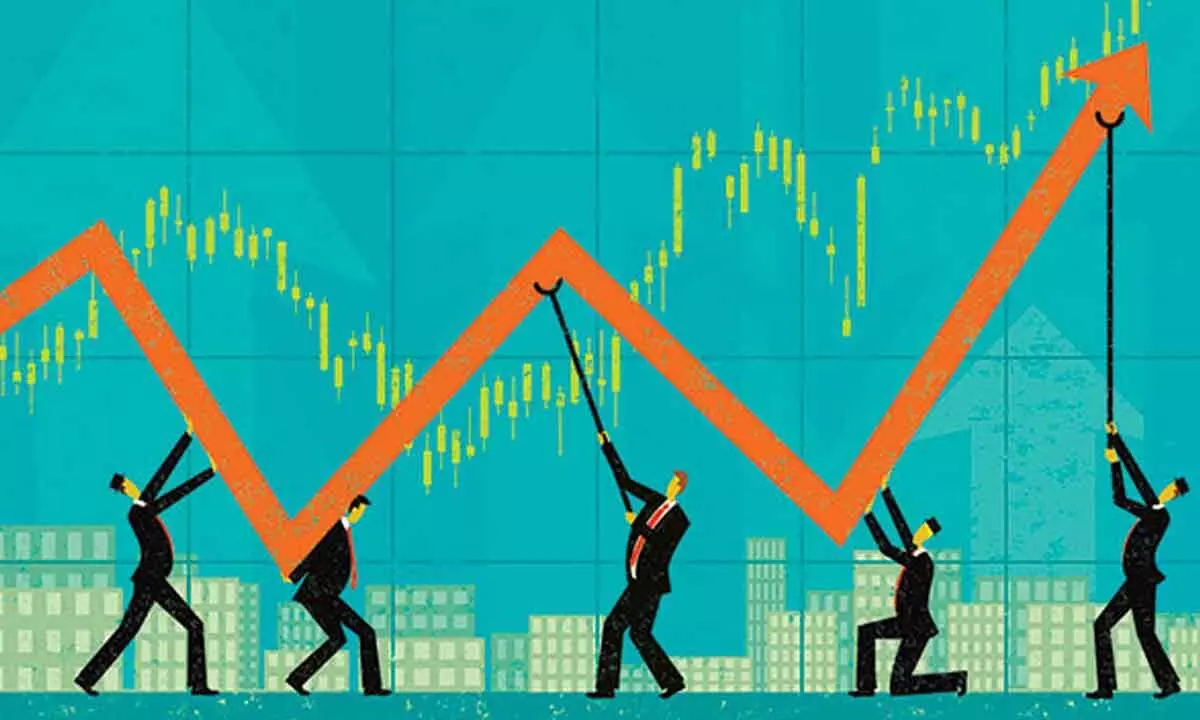Supply-side measures needed to boost economy
Cutting regulation and reducing govt intervention vital for supply-side push
image for illustrative purpose

Finance Minister Nirmala Sitharaman is indeed a brave lady, for it takes a lot of courage to exude confidence on "India's relative and absolute growth performance in the rest of the decade" against a gloomy backdrop. A day after her remarks, the government itself released figures which showed an increase in inflation and a contraction in the index of industrial production (IIP).
Even before the dismal inflation and factory output numbers came out, every organization monitoring India's economy was bringing down growth estimates. The World Bank has pared India's growth rate projection by 1 per cent since June. Its current prediction is 6.5 per cent expansion in the current fiscal year, against 8.7 per cent in 2021-22.
The International Monetary Fund (IMF) has also brought down the growth rate forecast from 7.4 per cent to 6.8 per cent for 2022-23. The big three rating agencies - Fitch, Moody's, and S&P -have also trimmed India's growth rate.
"I am aware that growth forecasts around the world are being revised lower. We expect India's growth rate to be around 7 per cent this financial year. More importantly, I am confident of India's relative and absolute growth performance in the rest of the decade," Sitharaman said on Tuesday.
Broad-based growth in economic activity during the first quarter is also reflected in an improvement in employment, the Minister was quoted as saying. Based on the National Provident Fund Records, net payroll additions doubled in the quarter ending June 2022 compared to the corresponding period last year, with improvement seen across several industries, she added.
The Centre for Monitoring Indian Economy showed a decline in unemployment in September, so she is not off the mark.
Economic policies take effect with a lag, Sitharaman said. "Much of the work we had put in over the years are beginning to converge and coalesce; some have crossed their inflection point regarding their impact on the economy."
There is indeed a lag in the fructification of economic policies. Infrastructure development is one such area; here direct and indirect benefits do take time to come into being. In this sector, the Narendra Modi government has been doing pretty well. There is a constant, online monitoring of the pace of projects; the laggards are paid special attention to. Efforts are also being made to minimize, if not eliminate, any cost and time overruns.
Another achievement of the government, for which Sitharaman can take some credit, is the management of public finances. On the whole, the Finance Ministry has done well to keep the fiscal deficit in check. Even in normal times, a section of economists and experts keep pressing the Ministry, on one pretext or the other, to forget about fiscal prudence and pump-prime the economy. The Covid pandemic was a perfect excuse to go on a spending spree. The government avoided that temptation, though the numerous extensions of free food for the poor were uncalled for. Still, fiscal management has been good under Sitharaman.
But the government's failures on the other fronts can be ignored only by diehard Modi supporters. Rising prices hurt almost all people, but the government is unable to rein them in. The recently released data by the National Statistical Office show that the consumer price index rose 7.41 per cent in September, up from 7 per cent a month earlier.
Worse, the consumer food price index, which adversely affects the poor, rose from 7.62 per cent in August to 8.6 per cent in September.
Industrial production too is a cause for worry. The IIP for August was 18-month low, a decline of 0.8 per cent. Capital goods, which had been doing well this fiscal with overall growth of 18.7 per cent in the April-August period, grew by just 5 per cent in August. Non-durables fell by 9.9 per cent in August. One hopes that festive buying in September and October would change the situation. The overall growth in IIP in April-August was 7.7 per cent. The government still has miles to go. It has to check inflation. There has to be change in economic and fiscal policy; monetary policy measures, or tightening money supply by hiking repo rates, are not adequate. Prices of petroleum products must be brought down by reducing tax rates at different levels.
Further, there is considerable scope for supply-side boost by way of cutting regulation and reducing government intervention in the economy. Sitharaman's courage and confidence must be commensurate with policy decisions.

